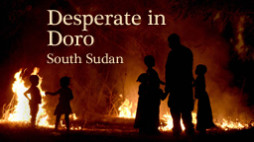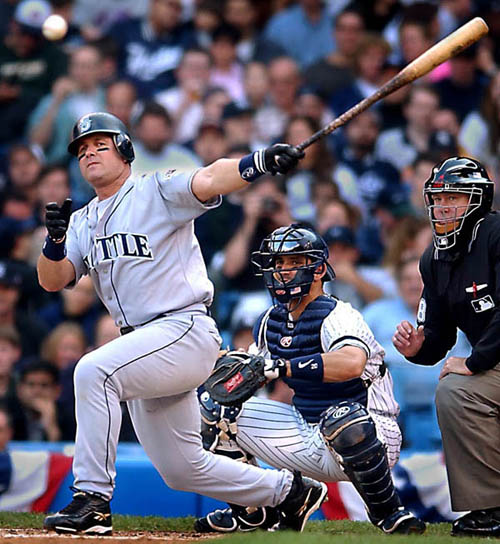Author Archives: gary
Doro, South Sudan: Displaced and Desperate

South Sudan continues to struggle for peace and autonomy after splitting from the North in 2011. With tribes displaced, they … Continue reading
Relief to South Sudan

Dr. Alan Kelley runs a nimble relief organization providing primary care in Sudan since 1998. Kelley states: “My organization serves … Continue reading
Reportage
This Sidebar page redirects to the main Reportage Page – it acts as a parent page to the Sidebar Pages … Continue reading
Sports

Action is movement comprised of moments. At a most basic level it's a reaction to stimulus and, commercially packaged, action is a huge part of American culture. Whether professional, amateur, or purely recreational, there is always action to be photographed. Sometimes moments within an action are pivotal and historic, though not realized for years to come. Other moments may be imminently pivotal and cause for immediate jubilation, consternation, or aggression. A face tells the story. Working professionally it's my job to tell a story when photographing action, which involves large amounts of anticipation and patience. The trick is anticipating a moment that best tells the story-- a constantly moving target. These moments are from a small, cross section of the limitless sports action found in our daily culture.
Sudan Upper Nile Refugees
Though the borders separating North and South Sudan were established by the British in 1953, they weren't formally recognized until July 9, 2011, when South Sudan voted to secede from the predominantly Arab North. The resulting two countries left thousands of marginalized tribes living along a contentious border who, despite their proximity, sided more ethnically and politically with the South. In September, 2011, villages in the Upper Nile became the targets of North Sudan's Antonov bombers, as directed by Khartoum, who today continues to push these marginalized tribes south and--through terror--squelch a perceived threat to the North's primary interest-- oil. Displaced tribes, from Malakal to Yida and Bala Tuma, consist of Mayak, Uduk, and Jum Jum tribes who are Muslim, Christian, and Animists. The week before I arrived with doctor Alan Kelley a refugee camp in Yida and a market in Bala Tuma, 30 km away, were bombed resulting in 20 deaths and a mass migration south. Under the light of moon, thousands of traumatized villagers packed their belongings in wicker baskets and fled south to Doro. We arrived in Doro November 14, 2011. Within that week a small community of perhaps 1000 refugees grew to approximately 12,000. The surrounding forest and scrub become bare as refugees sought firewood, shelter and food. The UNHCR, who arrived just 24 hours before us, began registering 1000 refugees a day. They projected 40,000 refugees by December and up to 70,000 living in the surrounding bush by January, 2012.
Sri Lanka Tsunami
In horrific proportions, told through first hand accounts and oceans of tears, the Indonesian tsunami ruthlessly reminded the world how fleeting life on earth can be. In only minutes, the world lost unofficially 283,100 lives on Sunday, December 26, 2004. The first wave lashed Sri Lanka's eastern shore at approximately 9:00 a.m., nearly two hours and 2000 miles from a 9.0 earthquake that struck Indonesia at 7:58 a.m. local time. Its epicenter was 255 miles southeast of Banda Aceh, Sumatra, at a depth of 18.6 miles, or 30 kilometers (USGS). Today, over 10,000 are still recorded as missing. From Thailand to Indonesia, Bangladesh to Sri Lanka, the Maldives to Myanmar and Somalia, the quake had tipped the Indian ocean setting forth a ripple characterized as biblical as not just villages, but islands were forever swept from view. --SS
Middle East & Gaza
The Middle East is many things to many people. It is where stories have come from and where stories evolve. Westerners have come to know the Middle East through the Arab-Israeli Wars, the Iran-Iraq War, and the Persian Gulf Wars. At the root it is the homeland of the world's three monotheistic religions: Christianity, Islam, and Judaism. Such wars are indicative of the spiritual depth, the economic resources, and the political stakes serving as bedrock for this region. Defining boundaries becomes even more complex as borders and loyalties change over time--and cultures are destroyed. Chris Hedges challenges, "War is a force that gives us meaning." Historically, and for now, the Middle East includes the lands of Gaza, Israel, and the Palestinian Territories as shown here during trips taken with Physicians For Peace.
Kosovo
This work is the result of two trips taken to the region in 1999. The first came just before NATO began their air attacks and the subsequent exodus of native Kosovars, many with Albanian roots, to neighboring Albania and Macedonia. The second trip was within days of the NATO and KFOR ground troop assault when Serbia ultimately withdrew from Kosova--a Yugoslavian province thirsting for independence. The following months revealed ghastly accounts from a traumatized rural population as Kosovars returned to torched homes and fields of massacred relatives. The Yugoslav war resulted in the largest human exodus in Europe since WWII. The majority of this work was shot on Tri-X and Fujichrome using Leica M6s and syndicated by Black Star Publishing. Prints are available for exhibition and educational purposes.
Juvenile Bootcamp
This work grew out of an assignment I had while Chief Photographer at The Albany Herald in South Georgia after the newspaper received information that a once empty prison for adults in Ocilla, Georgia, was to be modernized and used to reform juveniles. Juvenile courts from around the state would now have a new 316 bed facility for their troubled youth. The Youth Development Campus brought 165 new jobs to a rural economy, a $2 million payroll, and about $35,000 a year in property taxes. Recidivism statistics show that 64-71% youths return to such camps. I photographed the project in black and white using Kodak 3200 ASA recording film to facilitate a documentary and candid approach and to help crystallize those methods used in juvenile reform. The camp closed November 30, 2002, due to state cut backs. --SS